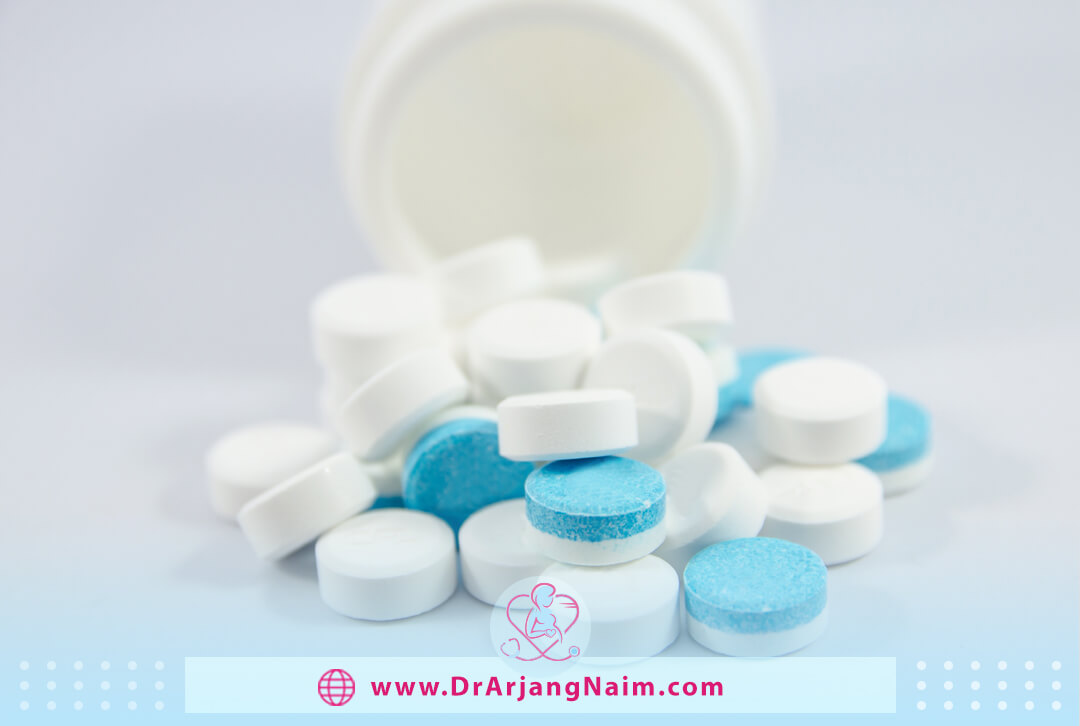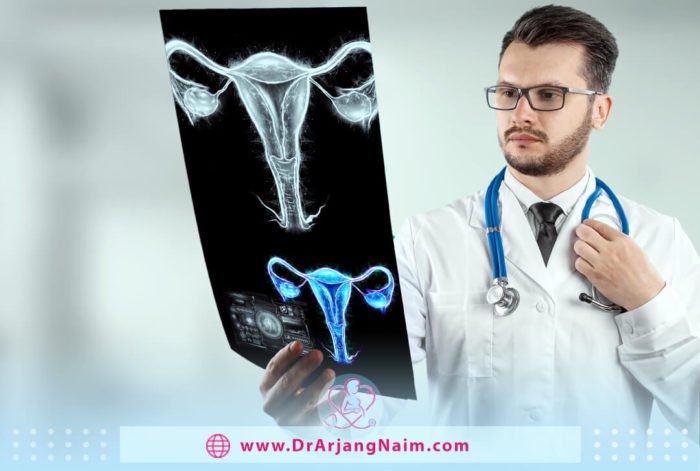The ovary is one of the most important organs in the body that plays an important role in female fertility. Ovarian torsion is a condition that occurs when an ovary twists around the ligaments that hold it in place. This twisting can cut off blood flow to the ovaries and fallopian tubes. Ovarian torsion can cause severe pain and other symptoms because the ovaries do not receive enough blood. If the blood restriction continues for a long time, it can lead to tissue death.
Ovarian torsion symptoms
Symptoms include:
- An adnexal or pelvic mass
- Nausea
- Severe pelvic pain
- Vomiting
- Fever
- Abnormal bleeding
Diagnosing can be challenging because it has symptoms similar to those of kidney stones, appendicitis, urinary tract infections, gastroenteritis, and other conditions.
Causes of ovarian torsion
People between the ages of 20 and 40 are more likely to develop ovarian torsion. However, women of all ages, from infancy to menopause, can experience ovarian torsion. Occasionally, a cyst or other tissue mass in the ovary can move it. Excess weight or mass on the ovary can cause it to twist and rotate around the supporting ligaments. Another common cause is the ovarian ligament, which connects the ovary to the uterus. Long ovarian ligaments make ovarian torsion more likely.
Assisted reproductive technologies (ARTs), such as induction of ovulation, are another factor that can increase the risk of ovarian torsion. Pregnant women can experience ovarian torsion as well as those who are not pregnant. In the first trimester, women may have corpus luteum cysts that cause the ovaries to twist. Higher hormone levels during pregnancy can also cause the body’s tissues to relax, including the ligaments that hold the ovaries in place. If the ligaments are not tight, they may be prone to twisting.
Who is at risk for ovarian torsion?

Ovarian torsion is more common in women during childbirth but sometimes occurs in girls before puberty. The presence of a cyst on the ovary is the biggest risk factor for ovarian torsion because the cyst can unbalance the ovary and cause it to twist. Other conditions that can cause a cyst to twist, including:
- Pregnancy: When a woman ovulates, an egg is released from the follicle. If pregnancy occurs, the corpus luteum is broken down and reabsorbed by the body. If pregnant, the corpus luteum sometimes fills with blood or fluid and turns into a cyst. This type of cyst is common and is more common in early pregnancy. It often goes away on its own but can cause the ovaries to twist.
- Hormonal medications: Taking hormones that cause ovulation (used to treat infertility) can stimulate the ovaries to form cysts, increasing the likelihood of ovarian torsion.
How is it diagnosed?
Seek medical attention immediately if you develop symptoms of ovarian torsion. The longer this disease is not treated, the more likely it is that complications will occur. After evaluating the symptoms and reviewing the medical history, the doctor examines the pelvis to find any area of pain and tenderness. They also do a vaginal ultrasound to look at the ovaries, fallopian tubes, and blood flow. The doctor will also use a blood and urine test to rule out other possible diagnoses, such as the following:
- Urinary tract infection
- Ovarian abscess
- Ectopic pregnancy
- Appendicitis
Although a doctor can diagnose ovarian torsion based on these findings, a definitive diagnosis is usually made during corrective surgery.
Complications
The longer it takes to diagnose and treat, the more ovarian tissue is damaged. When torsion occurs, blood flow to the ovaries and possibly to the fallopian tube decreases. Prolonged reduction in blood flow can lead to necrosis (tissue death). If this happens, the doctor will remove the ovary and other damaged tissues.
Surgery to treat can affect fertility because the ovary produces and releases an egg for fertilization. However, if the doctor does not remove the ovary, the person is at risk for an ovarian infection that can cause an abscess or peritonitis.
Can ovarian torsion be prevented?
There is no specific medical method to prevent ovarian torsion. It happens all at once, and in many cases, there is no reason for it. For this reason, it is not possible to prevent it. This problem is more common in the reproductive years and may decrease with the onset of menopause.
Ovarian torsion and assisted reproduction
People who undergo ART are more prone to ovarian torsion than those who do not. The increased risk is usually due to hormones needed for in vitro fertilization or induction of ovulation. Hormones can cause the ovaries to enlarge, cause multiple cysts, or both. While ovarian cysts are usually harmless, they can increase the risk of ovarian torsion.
While ART can be a successful treatment when a person has difficulty conceiving, people should always talk to their doctor about the potential risks and seek medical attention if they notice signs of ovarian torsion.
Treatment
Surgery is performed to open the twisted ovary and, if necessary, the fallopian tube. After surgery, the doctor may prescribe medications to reduce the chance of recurrence. Sometimes it may be required to remove the damaged ovary.
Surgical procedures
The doctor uses one of two surgical methods to remove the ovary.
Laparoscopy
The doctor inserts a thin, clear instrument into a small incision in the lower abdomen. This allows the doctor to view the internal organs. They make another incision to allow access to the ovaries. Once the ovary is available, the doctor uses a blunt probe or other tools to untwist it. This procedure requires general anesthesia and is usually performed on an outpatient basis.
Laparotomy
With this procedure, the doctor makes a larger incision in the lower abdomen to access the ovaries manually. This is done while the patient is under general anesthesia and has to stay in the hospital overnight.
If a long time has passed and a long-term loss of blood flow has caused the death of the surrounding tissue, the doctor uses the following methods:
- Oophorectomy: If the ovarian tissue is not alive, the doctor will use this laparoscopic procedure to remove the ovary.
- Salpingo-Oophorectomy: If ovarian and fallopian tissue are unavailable, the doctor will use this laparoscopic procedure to remove both.
As with any surgery, the risks of these procedures may include blood clots, infection, and complications from anesthesia.
Medication

The doctor may recommend over-the-counter painkillers to relieve symptoms during recovery:
- Acetaminophen (Tylenol)
- Ibuprofen (Advil)
- Naproxen (Aleve)
If the pain gets worse, the doctor may prescribe drugs such as:
- Oxycodone (OxyContin)
- Oxycodone with acetaminophen (Percocet)
The doctor may prescribe high-dose birth control pills or other hormonal contraceptives to reduce the risk of recurrence.
The bottom line
Ovarian torsion occurs in women when the ovary twists around the tissues that support it. Sometimes the fallopian tube may also become complicated. This painful condition stops blood flow to these organs. It is a medical emergency. If not treated quickly, it can lead to the loss of an ovary.
After thoroughly examining the patient’s condition, Arjang Naim MD first identifies the cause of the pain and tries to eliminate the ovarian torsion as much as possible without removing the ovary.
Additional questions
- How long does it take for ovarian surgery?
Abdominal oophorectomy is performed under general anesthesia and generally takes about 1-2 hours. Abdominal oophorectomy requires a larger incision to remove the ovaries and fallopian tubes.
- Is ovarian torsion an emergency surgery?
Although ovarian torsion is not common, it is a medical emergency. Surgery is necessary to open or remove the ovary. If blood flow is interrupted for a period of time, the ovary may no longer be able to do its normal job, which can affect fertility and cause other problems.
- What size ovarian cyst causes torsion?
The large size of the ovary increases the risk of torsion. Torsion occurs when the ovary is 5 cm or larger in diameter, although torsion can occur in ovaries of any size. In general, as the size of the ovary increases, the risk of torsion increases.
- Can ovarian torsion cause death?
Ovarian torsion can cause severe pain and other symptoms because the ovary does not receive enough blood. If blood restriction continues for a long time, it can lead to tissue death. Ovarian torsion is a rare condition that occurs in only 6 out of 100,000 women.
- Does ovarian torsion affect fertility?
Prompt treatment of ovarian torsion does not compromise the ability to conceive. If treatment is delayed and the lack of blood flow causes tissue loss, the doctor may need to remove the ovary.
References:
https://www.baptisthealth.com/services/womens-care/conditions/ovarian-torsion
https://radiopaedia.org/articles/ovarian-torsion
https://www.webmd.com/women/what-to-know-ovarian-torsion
https://www.yalemedicine.org/conditions/ovarian-torsion
https://www.yalemedicine.org/conditions/ovarian-torsion
https://www.medicalnewstoday.com/articles/322666#seeing-a-doctor




